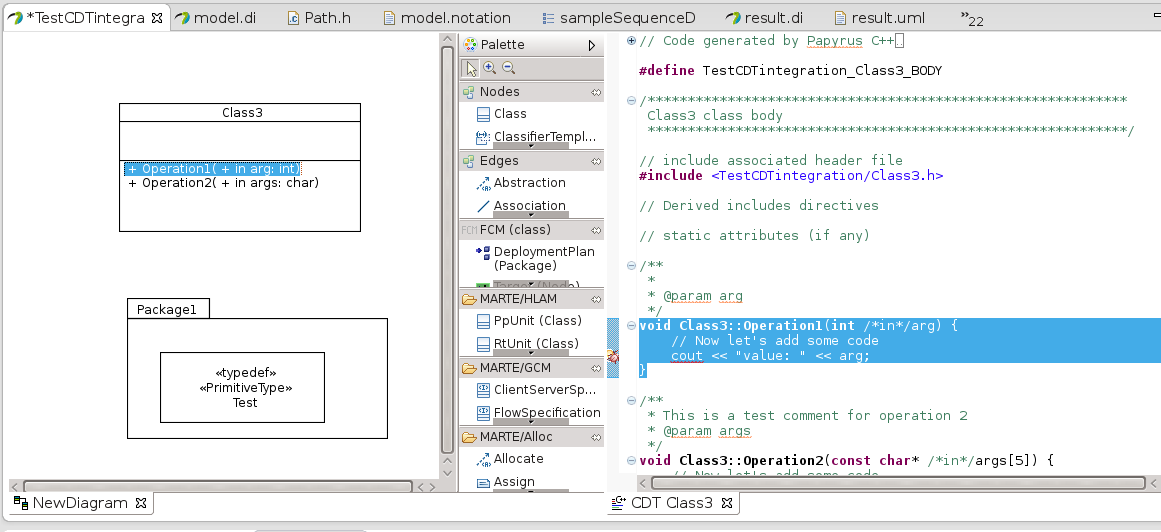
- ECLIPSE UML EDITORS THAT CAN GENERATE CODE GENERATOR
- ECLIPSE UML EDITORS THAT CAN GENERATE CODE CODE
From a database schema we can generate DAOs
ECLIPSE UML EDITORS THAT CAN GENERATE CODE CODE

In this second case the generated code can do more than what you want, but this is not necessarily an advantage.
ECLIPSE UML EDITORS THAT CAN GENERATE CODE GENERATOR
Sometimes it has to do with glue code, needed to link different parts together, or the fact that the generator supports more use cases than the one you need. ComplexityĬode generated automatically tends to be more complex than code written by hand. This is especially risky if you do not have or cannot find the right competencies to work on the generator. So the advantages of code generation are not free. If you created it you have to keep updating it, if you are just using an existing one you have to hope that somebody keep maintaining it or you have to take over yourself. A code generator tool must be maintained. When you use a code generator tool your code becomes dependent on it.

Why Not to Use Code GenerationĪs all tools code generation is not perfect, it has mainly two issues: maintenance and complexity. With code written manually instead you can have different developers use different styles and occasionally introduce errors even in the most repetitive code. The code always works the way you expect, of course except in the case of bugs in the generator. The generated code is designed according to the same principles, the naming rule match, etc. With code generation you always get the code you expect. So the same abstract description can be used to generate different kinds of artifacts. Another example: you might write a UML diagram and use code generation to create both a skeleton class in C# and the SQL code to create a database for MySQL. For example, with a parser generator you can get a parser in C#, Java and C++. You can also target multiple platforms at once. Once you have a process to generate code for a certain language or framework you can simply change the generator and target a different language or framework. That description is typically easier to analyze and check compared with the whole generated code. It means that your source of truth becomes that description, not the code. With code generation you generate your code from some abstract description. Providing the specific inputs to the generator and invoke it is significantly faster than writing the code manually, therefore code generation permits to save time. With code generation you write the generator once and it can be reused as many times as you need. The reasons to use code generation are fundamentally four: productivity, simplification, portability, and consistency. In this article we explore all the possibilities provided by code generation to give you a complete overview on the subject.

It can be used with widely different programming languages and using different techniques. So Code Generation can be used for small portions of code or entire applications. Some IDEs have the functionality to generate boilerplate code, like the equals or hashCode methods in Java.We can generate code, using programming languages with powerful metaprogramming features.We can generate code from information we obtained by reverse-engineering code written using other languages or frameworks.We can generate code from information we obtained processing existing documents.We can generate entire applications from high level DSLs.We wrote about an example here: Code Generation with Roslyn: a Skeleton Class from UML We can generate skeletons of applications from simple models.For example, we can generate Data Access Objects from database schema files



 0 kommentar(er)
0 kommentar(er)
